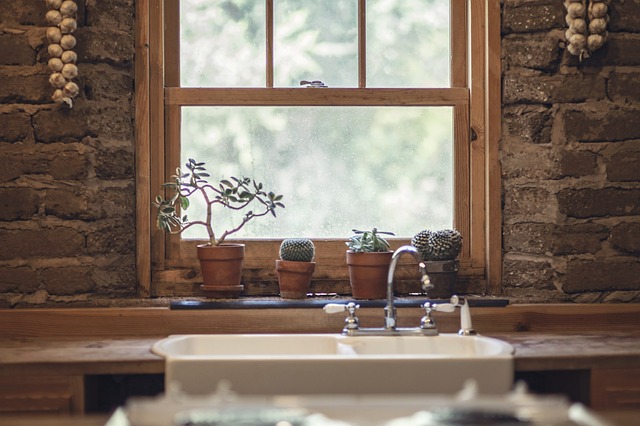Wabi-Sabi: The Art of Embracing Imperfection in Home Design
In a world obsessed with perfection, a counterculture movement is quietly reshaping our homes and gardens. Wabi-sabi, an ancient Japanese philosophy, is making waves in modern interior design, offering a refreshing perspective on beauty and authenticity. This aesthetic celebrates the imperfect, impermanent, and incomplete, inviting us to find charm in the weathered, asymmetrical, and natural. As we explore this intriguing concept, prepare to discover how embracing flaws can lead to a more serene and soulful living space.

The Origins of Wabi-Sabi
The concept of wabi-sabi emerged in 15th century Japan, during a time of political turmoil and cultural shift. Originally, wabi referred to the loneliness of living in nature, while sabi denoted the passage of time or withering. Over time, these ideas merged and evolved, coming to represent a worldview that finds beauty in simplicity, impermanence, and imperfection.
Zen Buddhist monks played a crucial role in developing wabi-sabi aesthetics, incorporating these principles into the tea ceremony. They used simple, handmade bowls and utensils, often with visible flaws, to create a humble and intimate atmosphere. This practice spread beyond religious circles, influencing Japanese art, architecture, and eventually, home design.
Key Principles of Wabi-Sabi Design
Embracing wabi-sabi in home design involves several core principles. First and foremost is the acceptance of imperfection. Rather than hiding flaws, wabi-sabi celebrates them as unique features that tell a story. This might mean choosing furniture with visible knots or using textiles with subtle irregularities.
Simplicity is another crucial aspect. Wabi-sabi spaces are typically uncluttered and feature a muted color palette, allowing each item to be fully appreciated. Natural materials like wood, stone, and clay are preferred for their inherent variations and ability to age gracefully.
Asymmetry plays a significant role in wabi-sabi design. Unlike traditional Western aesthetics that often prioritize symmetry and balance, wabi-sabi embraces irregularity. This might manifest in mismatched dining chairs or an off-center arrangement of wall art.
Incorporating Wabi-Sabi into Your Home
Bringing wabi-sabi into your living space doesn’t require a complete overhaul. Start small by introducing natural elements like a gnarled piece of driftwood or a vase of wildflowers. Embrace the beauty of wear and tear by displaying cherished items that show signs of use, such as a well-loved leather armchair or a chipped ceramic bowl.
In the kitchen, consider open shelving to display a collection of handmade pottery or utensils with varying patinas. Choose cutting boards with visible grain and imperfections, celebrating the unique character of each piece. In the dining area, mix and match plates and glasses for an eclectic, lived-in feel.
For the bedroom, opt for natural, breathable fabrics like linen or cotton in soft, earthy tones. Allow these materials to wrinkle naturally, embracing their tactile qualities. A weathered wooden bed frame or a vintage chest of drawers can add depth and history to the space.
Wabi-Sabi in the Garden
The principles of wabi-sabi extend beautifully into outdoor spaces. In the garden, this philosophy encourages a more relaxed approach to landscaping. Instead of perfectly manicured lawns and symmetrical flowerbeds, wabi-sabi gardens embrace the wild and untamed aspects of nature.
Consider allowing parts of your garden to grow freely, creating areas of controlled chaos. Incorporate elements like mossy stones, weathered wood, and rusted metal to add texture and a sense of time passing. Choose plants that change dramatically with the seasons, highlighting the impermanence of nature.
Water features in a wabi-sabi garden might include a simple stone basin or a naturally shaped pond rather than elaborate fountains. The sound of water trickling over rocks can create a sense of tranquility and connection to the natural world.
The Psychological Benefits of Wabi-Sabi Spaces
Beyond its aesthetic appeal, wabi-sabi design can have profound psychological benefits. In a culture that often equates perfection with success, embracing imperfection can be deeply liberating. Wabi-sabi spaces encourage mindfulness and presence, inviting us to slow down and appreciate the beauty in everyday moments.
Research has shown that environments that incorporate natural elements and imperfections can reduce stress and improve overall well-being. The simplicity and authenticity of wabi-sabi design create a sense of calm and groundedness, offering a respite from the overstimulation of modern life.
Moreover, wabi-sabi encourages a more sustainable approach to home design. By valuing items that age well and can be repaired, we move away from the disposable culture that dominates much of contemporary design. This shift not only benefits the environment but also fosters a deeper connection to our possessions and living spaces.
In conclusion, wabi-sabi offers a refreshing alternative to the pursuit of perfection in home design. By embracing imperfection, simplicity, and the passage of time, we can create living spaces that feel authentic, serene, and deeply connected to the natural world. As we navigate an increasingly complex and fast-paced world, the principles of wabi-sabi remind us to find beauty in the present moment and to celebrate the unique character of our homes and ourselves.





